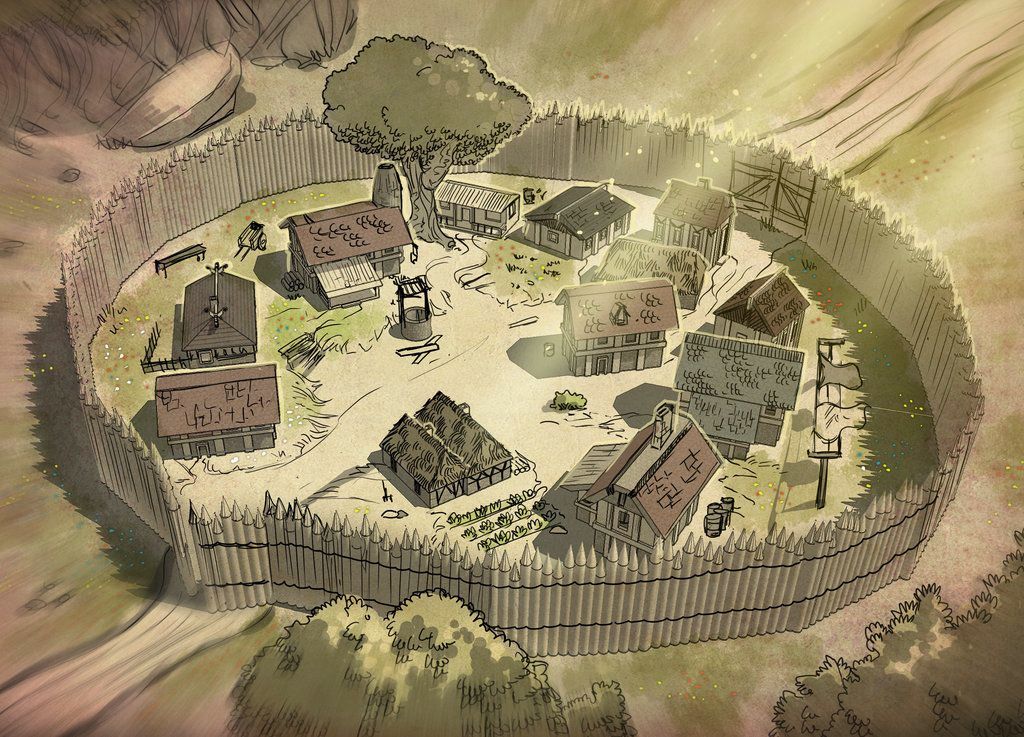Difference between revisions of "Bailey Hamlet"
Tao alexis (talk | contribs) |
Tao alexis (talk | contribs) |
||
| Line 3: | Line 3: | ||
__TOC__ | __TOC__ | ||
[[File:6-2b.2h.jpg|left|30px|thumb]] | [[File:6-2b.2h.jpg|left|30px|thumb]] | ||
| − | Such hamlets are always supported by a significant [[River|river]], with individual [[Farmland|farms]] and [[Communal Holding|communal holdings]] besides. While they share many characteristics of communal hamlets, a sizable number of persons acting as artisans and skilled labourers accounts for a class of persons that are distinctly non-agrarian, and therefore apart from the communal ideal. | + | Such hamlets are always supported by a significant [[River|river]], with individual [[Farmland|farms]] and [[Communal Holding|communal holdings]] besides. While they share many characteristics of communal hamlets, a sizable number of persons acting as artisans and skilled labourers accounts for a class of persons that are distinctly non-agrarian, and therefore apart from the communal ideal. |
| + | |||
| + | While traditions are respected and observed, and especially [[Religion|religion]] also, an unmistakable divide exists between those who go afield during the day and those whose constant presence in the hamlet itself forms the community's daily mood and sense of locality. | ||
== Composition == | == Composition == | ||
Revision as of 20:42, 16 January 2023
Bailey hamlets consist of a tightly-knit gathering of dwellings and buildings protected by an outer fortification, or bailey, which surrounds the hamlet's inner yard. It's not uncommon for the hovels of less important residents to be located outside the bailey's palisade and defensive ditch.
Contents
Such hamlets are always supported by a significant river, with individual farms and communal holdings besides. While they share many characteristics of communal hamlets, a sizable number of persons acting as artisans and skilled labourers accounts for a class of persons that are distinctly non-agrarian, and therefore apart from the communal ideal.
While traditions are respected and observed, and especially religion also, an unmistakable divide exists between those who go afield during the day and those whose constant presence in the hamlet itself forms the community's daily mood and sense of locality.
Composition
| Form | Facility |
|---|---|
| dwellings | half-timbered house, hovel |
| bulk goods | granary |
| harvesting | communal holding, water well |
| transport | boat dock, carter post, ox tether, stable |
| upkeep | gong pit |
| vendors | bakery |
| workings | fulling mill, gristmill, saw pit, shearing station, winepress |
Determination of the bailey hamlet's population is determined by a population generator located through this link, found on the tab marked "By. Hamlet." This generator provides notes for what conditions must exist for a given facility to be present. Where no condition is listed, the facility is always present (with the means to turn it off, nonetheless). By writing "no" in the "conditions exist" column, the number of residents is set at zero. "Nearby farmland" describes those farmers in the hex not related to the hamlet or its communal holding.
Because the consistent presence of a significant river enables reliance on watermills, windmills rarely occur in these hexes. This necessitates that some workings are built outside the hamlet's bailey, though in places a bailey may be extended over a narrow streamcourse, placing a mill inside. Saw pits must necessarily be built near the treeline, and therefore outside the wall, as well as gong pits, boat docks and communal holdings. About half the number of hovels possessed by farmers will also exist outside the bailey.
Half-timbered houses tend to be only one-story high. Expect a water well to have been dug per 35 residents, all located within the bailey. In some drier locations, a cistern replaces wells.
